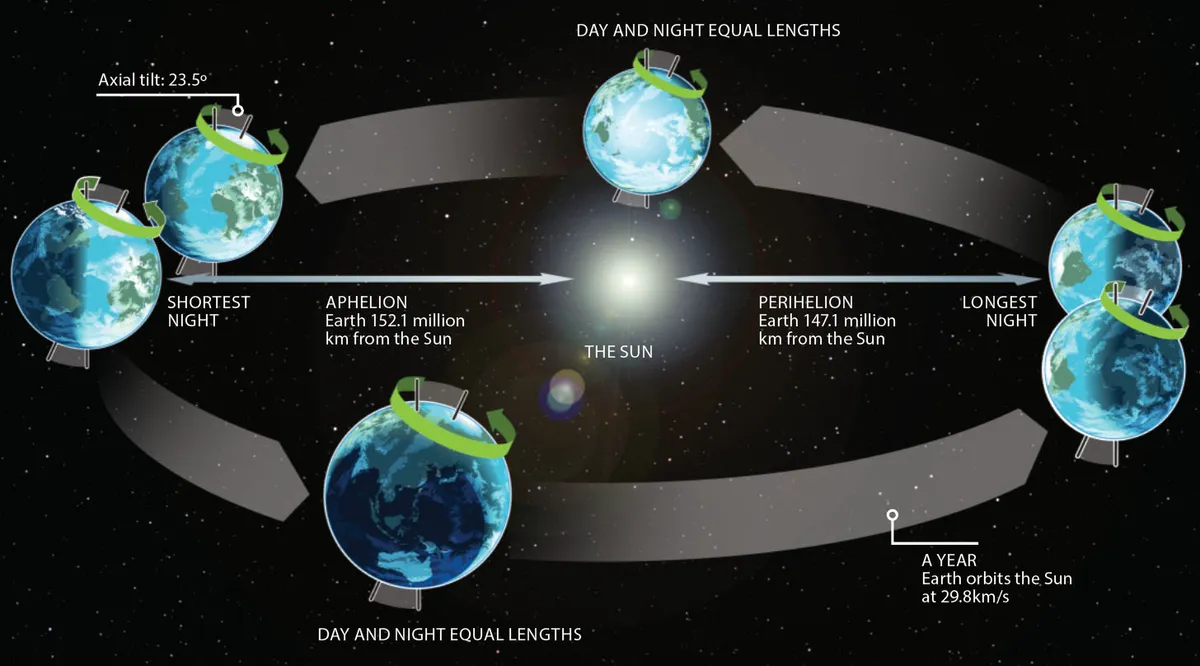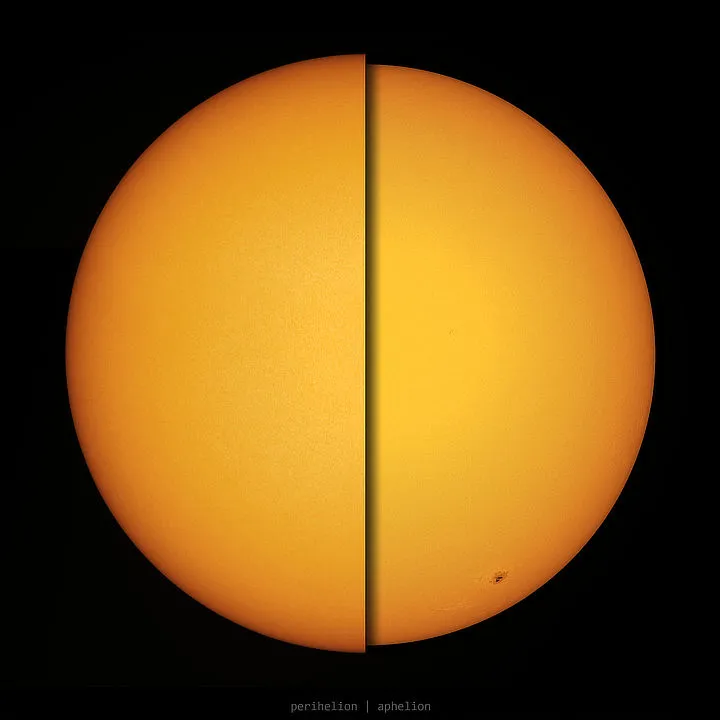This week on Thursday 3 July 2025, Earth reaches aphelion at 20:54 BST (19:54 UT), marking the point in Earth’s orbit when we’re furthest from the Sun.
At this time, Earth and the Sun will be 152,087,738km (94,502,939 miles) apart.
And if you're reading this, chances are you're are standing on Earth right now, which means you too are further from the Sun than at any other time this year.
Here we'll explore the difference between aphelion and perihelion, and why it happens.

Why aphelion and perihelion happen
It's rare to find a planet orbiting its host star in a perfect circle.
Most planets orbit their stars in elliptical – i.e. egg-shaped – orbits, and the extent to which a planet's orbit deviates from a perfect circle is known as orbital eccentricity.
Earth is the same: it doesn't orbit the Sun in a perfect circle. It too has an elliptical orbit.
That means sometimes Earth is further away from the Sun in its orbit than at other times.
When Earth is closest to the Sun in its orbit, it's known as perihelion. When it's furthest from the Sun in its orbit, it's known as aphelion.

Aphelion 2025
Earth reaches aphelion in 2025 at 20:54 BST (19:54 UT) on 3 July, marking the position where Earth – the orbiting body – is furthest from its host star, in this case the Sun.
Incidentally, perihelion next occurs on 3 January 2026.
There’s an irony that the Northern Hemisphere’s summer occurs during aphelion.
Some may attribute cool, gloomy UK summer days to aphelion, but it’s the tilt of Earth’s axis relative to the Sun that really governs the seasons, not variations in its orbital distance.

Measuring aphelion
Are aphelion and perihelion – and the difference between the two – measurable using amateur equipment?
The answer is yes, as long as you equipment is fitted with a certified solar safety filter and can be used to take a photograph of the Sun’s disc, ideally in one go.
An assembled mosaic of the entire disc will work just fine too, as long as you can maintain the Sun’s outline undistorted.
A bit of safety advice is required here. Don’t look at the Sun directly with the naked eye or any unfiltered optical instruments, as doing so could damage your eyesight and your equipment.
That being said, it is doable, but it calls for a lot of patience.

If you keep taking full-disc solar images from aphelion through to early January (this being where the patience is required), when we reach perihelion and are closest to the Sun, comparing full disc sizes will show you just how much the apparent size of the Sun varies over half our orbit.
Comparing the aphelion Sun with the perihelion Sun gives the greatest variation, and it’s rather noticeable.
If you manage to capture images showing the difference between perihelion and aphelion, we'd love to see them! Email us via contactus@skyatnightmagazine.com
